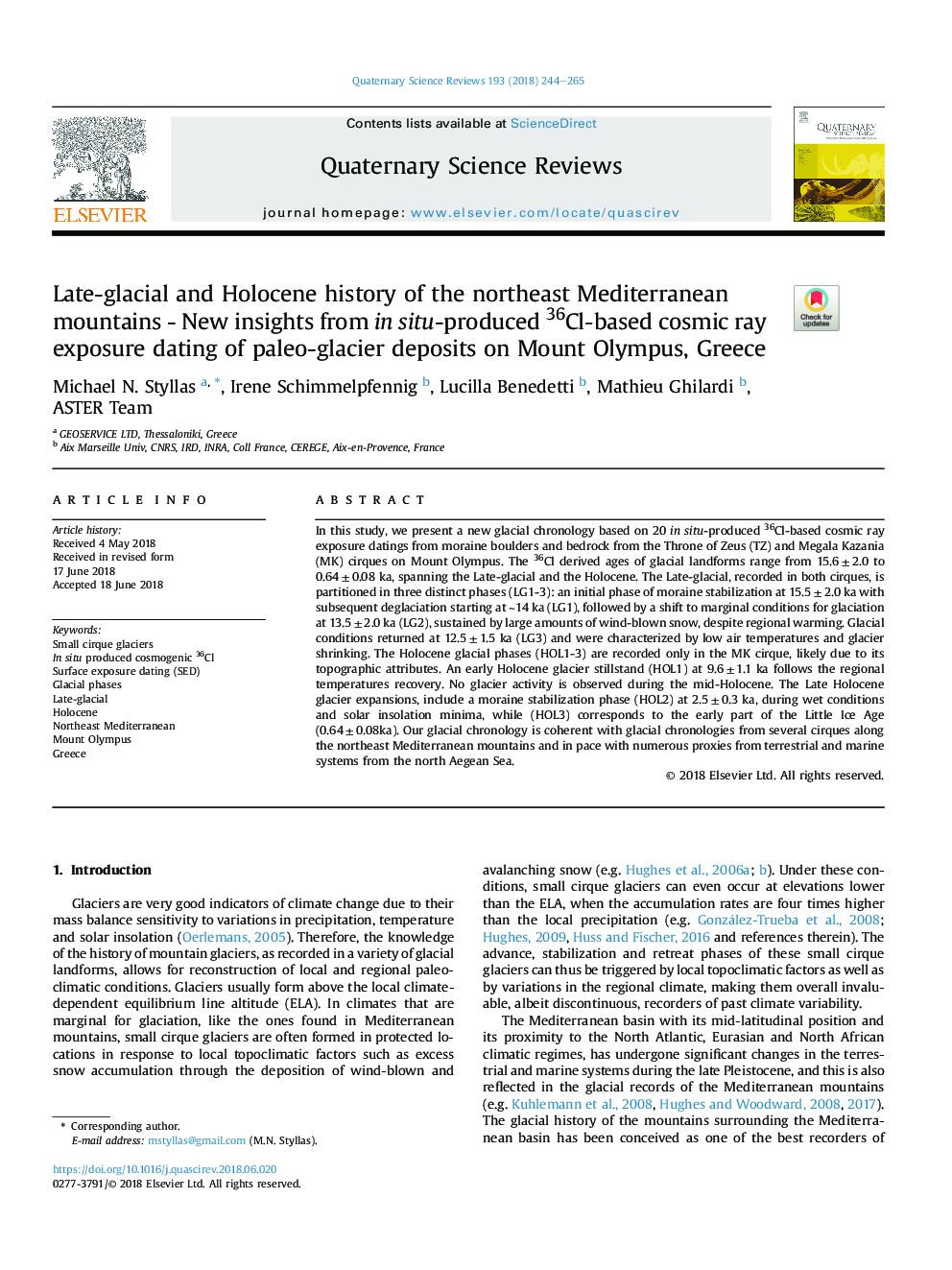| Article ID | Journal | Published Year | Pages | File Type |
|---|---|---|---|---|
| 8914694 | Quaternary Science Reviews | 2018 | 22 Pages |
Abstract
In this study, we present a new glacial chronology based on 20 in situ-produced 36Cl-based cosmic ray exposure datings from moraine boulders and bedrock from the Throne of Zeus (TZ) and Megala Kazania (MK) cirques on Mount Olympus. The 36Cl derived ages of glacial landforms range from 15.6â¯Â±â¯2.0 to 0.64â¯Â±â¯0.08 ka, spanning the Late-glacial and the Holocene. The Late-glacial, recorded in both cirques, is partitioned in three distinct phases (LG1-3): an initial phase of moraine stabilization at 15.5â¯Â±â¯2.0 ka with subsequent deglaciation starting at â¼14 ka (LG1), followed by a shift to marginal conditions for glaciation at 13.5â¯Â±â¯2.0 ka (LG2), sustained by large amounts of wind-blown snow, despite regional warming. Glacial conditions returned at 12.5â¯Â±â¯1.5 ka (LG3) and were characterized by low air temperatures and glacier shrinking. The Holocene glacial phases (HOL1-3) are recorded only in the MK cirque, likely due to its topographic attributes. An early Holocene glacier stillstand (HOL1) at 9.6â¯Â±â¯1.1 ka follows the regional temperatures recovery. No glacier activity is observed during the mid-Holocene. The Late Holocene glacier expansions, include a moraine stabilization phase (HOL2) at 2.5â¯Â±â¯0.3 ka, during wet conditions and solar insolation minima, while (HOL3) corresponds to the early part of the Little Ice Age (0.64â¯Â±â¯0.08ka). Our glacial chronology is coherent with glacial chronologies from several cirques along the northeast Mediterranean mountains and in pace with numerous proxies from terrestrial and marine systems from the north Aegean Sea.
Keywords
Related Topics
Physical Sciences and Engineering
Earth and Planetary Sciences
Geology
Authors
Michael N. Styllas, Irene Schimmelpfennig, Lucilla Benedetti, Mathieu Ghilardi,
